 To enhance service speed and avoid tariff delays, we've opened a US warehouse. All US orders ship directly from our US facility.
To enhance service speed and avoid tariff delays, we've opened a US warehouse. All US orders ship directly from our US facility.
| Cat. No. | Product Name | Field of Application | Chemical Structure |
|---|---|---|---|
| DC31184 | Idoxuridine Featured |
Idoxuridine is an anti-herpesvirus antiviral and anticancer drug. It is a nucleoside analogue, a modified form of deoxyuridine, similar enough to be incorporated into viral DNA replication, but the iodine atom added to the uracil component blocks base pairing. It is used only topically due to cardiotoxicity. It was synthesized by William Prusoff in the late 1950s. Initially developed as an anticancer drug, idoxuridine became the first antiviral agent in 1962.
More description
|

|
| DC32287 | Pinostrobin Featured |
Pinostrobin is a flavonoid with diverse biological activities, including antioxidant, anti-inflammatory, and anticancer properties. Pinostrobin is a dietary bioflavonoid discovered more than 6 decades ago in the heart-wood of pine (Pinus strobus). Pinostrobin has depicted many pharmacological activities including anti-viral, anti-oxidant, anti-leukaemic, anti-inflammatory and anti-aromatase activities. It is an inhibitor of sodium channel and Ca(2+) signalling pathways and also inhibits intestinal smooth muscle contractions.
More description
|
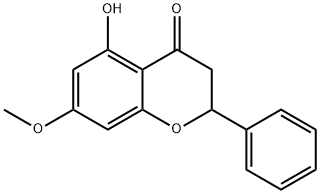
|
| DC33104 | DL-0108 Featured |
Pinocembrin, also known as DL-0108, is an androgen receptor ligand potentially for the treatment of acute stroke.
More description
|
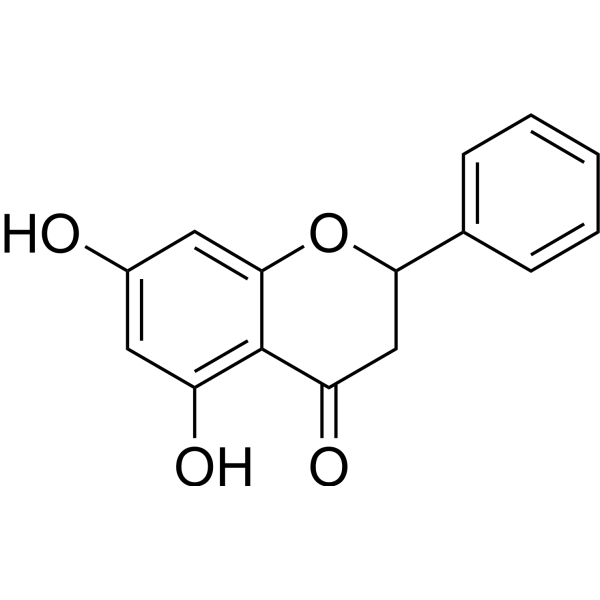
|
| DC21314 | ML316 Featured |
ML316 is a specific antifungal agent that fungal-selectively inhibits the mitochondrial phosphate carrier Mir1, exhibits potent antifungal activity against the moderatelyazole-resistant C. albicans strain CaCi-2 with MIC of 0.05 ug/ml.
More description
|
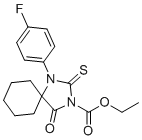
|
| DC23024 | N-65828 Featured |
NCI-65828 (designated as N 65828,NSC-65828) is a small-molecule inhibitor targeting angiogenin (ANG), a protein critical for angiogenesis and cellular proliferation. Its therapeutic potential stems from selective suppression of ANG's ribonucleolytic function, a biochemical activity essential for mediating downstream biological effects. By disrupting ANG's enzymatic capacity to cleave RNA substrates, NCI-65828 attenuates the protein's pro-angiogenic signaling pathways.
Preclinical evaluations highlight its multifaceted antitumor properties. In vitro studies using diverse cancer cell models—including bladder carcinoma (T24; IC₅₀ = 1.3 ± 0.5 μM), cervical adenocarcinoma (HeLa; IC₅₀ = 1.9 ± 0.4 μM), and urothelial carcinoma (UROtsa; IC₅₀ = 3.2 ± 0.8 μM)—demonstrate dose-dependent antiproliferative effects, with potency variations reflecting tissue-specific sensitivity. Parallel experiments in human umbilical vein endothelial cells (HUVECs) reveal significant inhibition of capillary-like tube formation, confirming its antiangiogenic efficacy in disrupting endothelial morphogenesis.
Notably, in vivo investigations using transgenic murine models demonstrate that NCI-65828 effectively suppresses the development of prostatic intraepithelial neoplasia (PIN) lesions. Mechanistic analysis indicates this activity arises from direct enzymatic inhibition rather than interference with ANG's intracellular trafficking, as nuclear translocation remains unaffected—a distinguishing feature that differentiates it from other ANG-targeted agents. This selective mode of action positions NCI-65828 as a precision tool for studying ANG-dependent pathologies.
More description
|
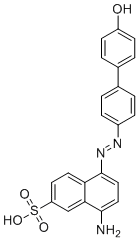
|
| DC9212 | Furafylline Featured |
Furafylline is a potent and selective inhibitor of human cytochrome P450IA2 with an IC50 of 0.07 μM.
More description
|

|
| DC20164 | PF-04965842 (Abrocitinib) Featured |
PF-04965842 is a selective Janus kinase 1 (JAK1) inhibitor, demonstrating potent activity against JAK1 with an IC50 of 29 nM. Its selectivity is evident from its significantly higher IC50 values for other JAK family members: 803 nM for JAK2, > 10,000 nM for JAK3, and 1,250 nM for TYK2. This selectivity profile suggests that PF-04965842 preferentially targets JAK1 over other JAK isoforms, which could be advantageous in reducing off-target effects and improving therapeutic outcomes in conditions where JAK1 signaling is implicated.
More description
|
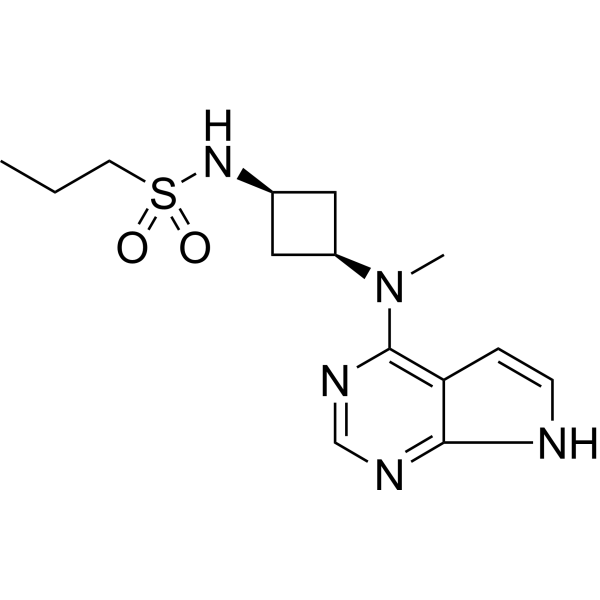
|
| DC45033 | RapiFluor-MS Featured |
RapiFluor-MS can be used a marker for LC-MS/MS analysis of N-glycans, which provides the highest MS signal enhancement for neutral glycans.
More description
|
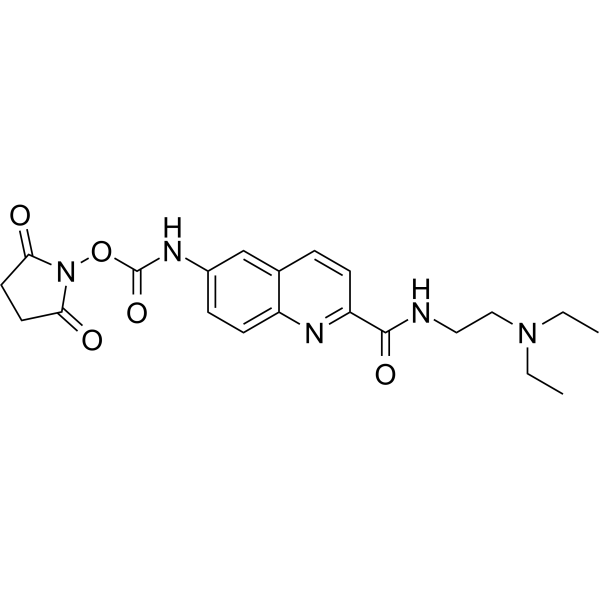
|
| DC22747 | AICP Featured |
AICP is a highly potent and selective GluN2C-containing NMDA receptor agonist that specifically targets the glycine-binding site of these receptors. It exhibits an EC50 of 1.7 nM at GluN1/GluN2C NMDA receptors, making it a powerful tool for studying the functional roles of GluN2C-containing NMDA receptors in the central nervous system.
More description
|
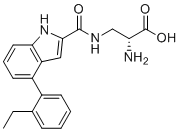
|
| DC74218 | UT-59 Featured |
UT-59 is a specific inhibitor that targets the cholesterol-sensing membrane protein Scap (SREBP cleavage-activating protein). It functions by binding to Scap's cholesterol-binding site, which prevents Scap from interacting with SREBPs (sterol regulatory element-binding proteins). This inhibition blocks the activation of SREBPs, which are key transcription factors involved in lipid and cholesterol biosynthesis. As a result, UT-59 effectively suppresses lipid synthesis, making it a potential therapeutic candidate for conditions associated with dysregulated lipid metabolism, such as hyperlipidemia, atherosclerosis, or metabolic disorders.
More description
|
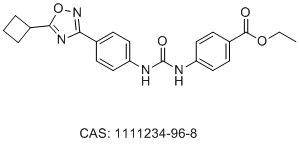
|
| DC75202 | Fosaprepitant free acid Featured |
Fosaprepitant, also known as MK0517, is an antiemetic drug, administered intravenously. It is a prodrug of aprepitant. Fosaprepitant was developed by Merck & Co. and was approved. It is a prodrug of Aprepitant. It aids in the prevention of acute and delayed nausea and vomiting associated with chemotherapy treatment. Fosaprepitant is a weak inhibitor of CYP3A4, and aprepitant, the active moiety, is a substrate, inhibitor, and inducer of CYP3A4
More description
|
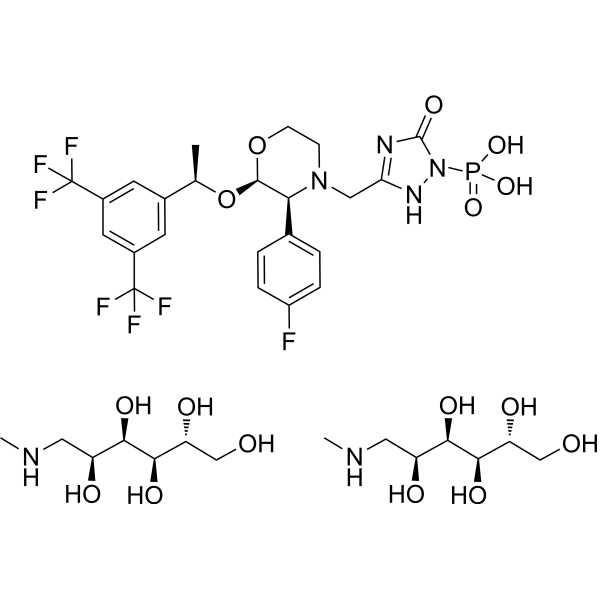
|
| DC12282 | Semaglutide (sodium salt) Featured |
Semaglutide, a long-acting GLP-1 analogue, is a glucagon-like peptide-1 (GLP-1) receptor agonist that can be used in the treatment of type 2 diabetes.
More description
|

|
| DC37766 | Eptifibatide Featured |
Eptifibatide is a potent glycoprotein IIb/IIIa antagonist (GPIIb/IIIa; Kd = 120 nM) that inhibits platelet aggregation. Eptifibatide prevents binding of the adhesion proteins fibrinogen and von Willebrand factor to GPIIb/IIIa on the surface of activated platelets to prevent aggregation and thrombus formation. It inhibits ADP-induced citrated blood aggregation (IC50 = 0.11-0.22 μg/ml) in vitro and in vivo (IC50 = 52 μg/ml in porcine plasma). Formulations containing eptifibatide have been used to reduce risk of thrombolysis in myocardial infarction in patients undergoing percutaneous coronary intervention.
More description
|
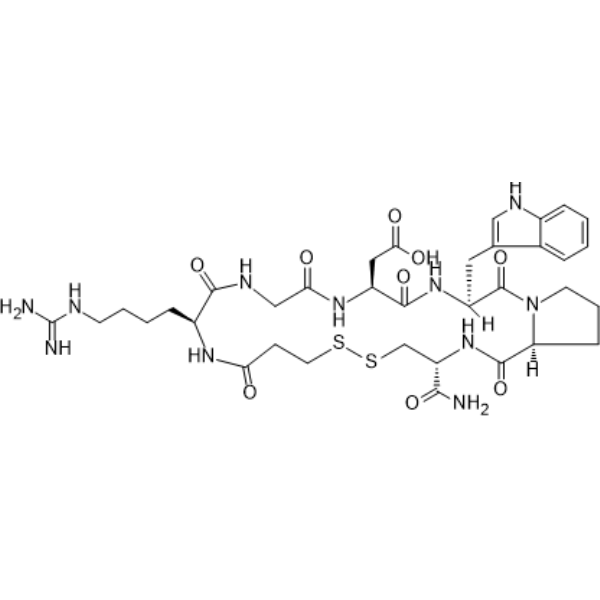
|
| DC23914 | Thymalfasin Featured |
An immunoactive peptide that has been shown to inhibit cell proliferation and induce apoptosis in human leukemia, non-small cell lung cancer, melanoma, and other human cancers.
More description
|
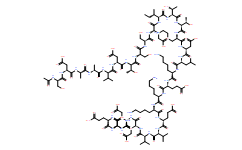
|
| DC23939 | Atosiban Featured |
Atosiban (RW22164; RWJ22164) is indeed a nonapeptide and a competitive antagonist of the vasopressin and oxytocin receptors. It is structurally similar to oxytocin but lacks the amino group at the N-terminus, making it a desamino-oxytocin analogue. Atosiban is primarily used as a tocolytic agent, which means it helps to inhibit premature labor by blocking the action of oxytocin on the uterus. This makes it particularly valuable in the management of spontaneous preterm labor, as it can help delay delivery, providing critical time for administering corticosteroids to enhance fetal lung maturity or for transferring the mother to a facility with appropriate neonatal care.
More description
|
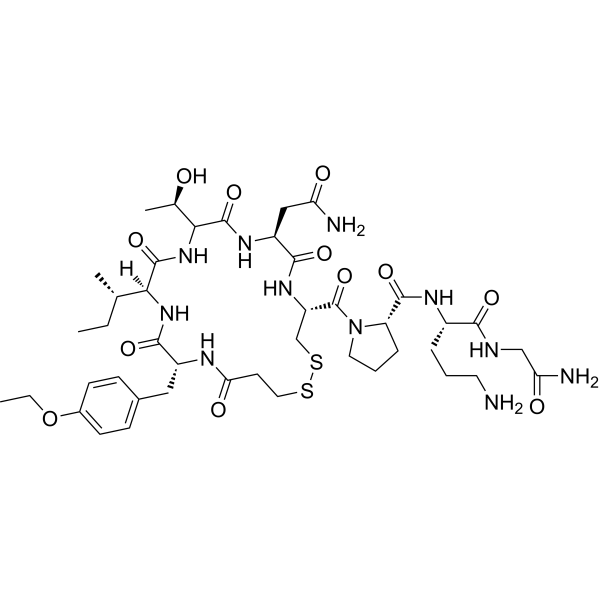
|
| DC73949 | CMP05-7 Featured |
CMP05-7 (Endosomolytic compound CMP05-7) is a novel endosomolytic small-molecule compound that exhibits higher transfection efficiency/ability to induce endosomal escape of oligonucleotides (ONs) than current compounds such as chloroquine.
More description
|
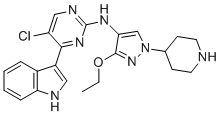
|
| DC74224 | XST-20 Featured |
XST-20 is a small molecule that selectively targets the DNA-binding domain (DBD) of FOXM1, atranscription factor involved in cell cycle progression, proliferation, and cancer development. Witha surface plasmon resonance (SPR)-derived binding affinity (Kd) of 20 uM, XST-20 effectivelysuppresses FOXM1's transcriptional activities, making it a promising candidate for targetingFOXM1-driven cancers, such as ovarian cancer.
More description
|

|
| DC21170 | JNJ525 Featured |
JNJ525 is a small molecule inhibitor that targets tumor necrosis factor alpha (TNFα), a cytokine involved in inflammation and immune regulation. TNFα exerts its biological effects by binding to its receptors, TNFR1 (TNF receptor 1) and TNFR2 (TNF receptor 2). JNJ525 works by preventing the formation of TNFα complexes with these receptors, thereby inhibiting TNFα-mediated signaling pathways.
More description
|
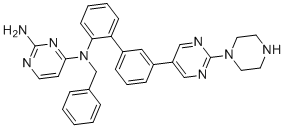
|
| DC31276 | PRLX93936 Featured |
PRLX 93936 is a structural analogue of erastin with potential antineoplastic activity. Erastin analogue PRLX 93936 appears to inhibit mitochondrial outer membrane protein VDACs (voltage-dependent anion channels) 2 and 3, resulting in an oxidative, non-apoptotic cell death. Erastin analogue PRLX 93936 exhibits greater lethality in cell lines harboring mutations in the GTPase protein oncogenes HRAS and KRAS or the serine-threonine protein kinase oncogene BRAF than in non-tumorigenic cell lines. VDACs 2 and 3 are up-regulated in a wide variety of tumor cell lines.
More description
|
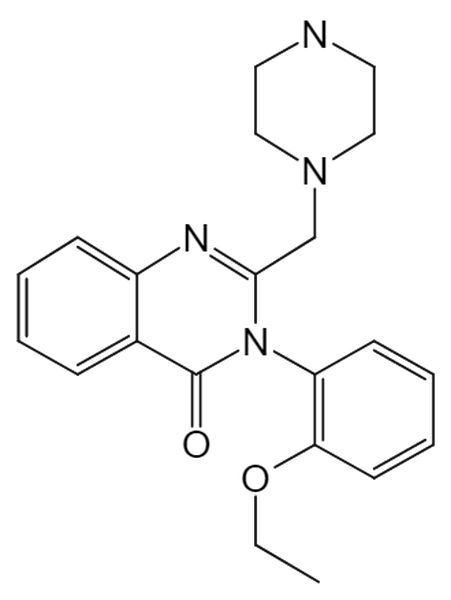
|
| DC21436 | OAT-177 Featured |
OAT-177 is a potent, selective, orally active acidic mammalian chitinase (AMCase) inhibitor with IC50 of 14 and 19 nM against human and mouse AMCas, respectively, >150-fold selectivity over mCHIT1.
More description
|
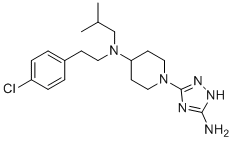
|
| DC23985 | Laduviglusib trihydrochloride Featured |
Laduviglusib (CHIR-99021) trihydrochloride is a well-characterized small molecule inhibitor that specifically targets glycogen synthase kinase-3 alpha and beta (GSK-3α/β). It exhibits potent inhibitory activity with IC50 values of 10 nM for GSK-3α and 6.7 nM for GSK-3β. Importantly, it demonstrates high selectivity, being over 500-fold more selective for GSK-3 compared to other kinases such as CDC2 and ERK2, as well as a broad range of other protein kinases.
More description
|
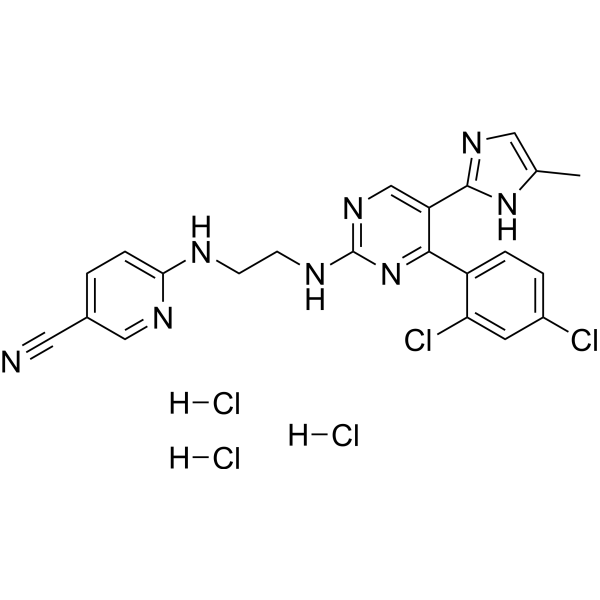
|
| DC20083 | H-Ile-Pro-Pro-OH Featured |
H-Ile-Pro-Pro-OH, a milk-derived peptide, inhibits angiotensin-converting enzyme (ACE) with an IC50 of 5 μM. Antihypertensive tripeptides.
More description
|
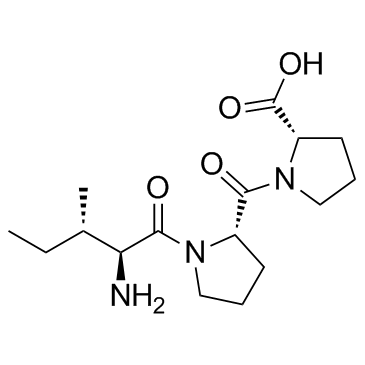
|
| DC73988 | EP055 Featured |
EP055 (EP-055) is a small molecule that targets EPPIN on the surface of sperm and inhibits motility (IC50=199.5 uM, CASA assay using human sperm), binds to the C-terminal domain of EPPIN.
More description
|
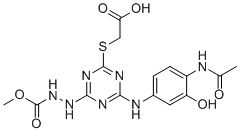
|
| DC74540 | MTX-3937 Featured |
MTX-3937 is a small-molecule inhibitor targeting Siglec-9 (Sialic acid-binding immunoglobulin-type lectin-9), a member of the Siglec family of immunomodulatory receptors. Siglec-9 is primarily expressed on immune cells, such as myeloid cells and natural killer (NK) cells, and plays a role in regulating immune responses by transmitting inhibitory signals through its intracellular immunoreceptor tyrosine-based inhibitory motifs (ITIMs).
More description
|
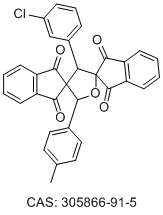
|
| DC75933 | BIX-01294 hydrochloride hydrate |
BIX-01294 hydrochloride hydrate is a histone-lysine methyltransferase (HMTase) inhibitor, which selective inhibits the G9aHMTase with IC50 of 1.7 μM, reduces histone-3 lysine (9) methylation (H3K9me), induces autophagy and apoptosis in human glioma cells.
More description
|

|
| DC75932 | Tagtociclib hydrate |
PF-07104091 hydrate is a potent and selective CDK2/cyclin E1 and GSK3β inhibitor, with Kis of 1.16 and 537.81 nM, respectively. PF-07104091 hydrate has anti-tumor activity for cyclin E1-amplified cancers.
More description
|

|
| DC75931 | PXB17 |
PXB17 can inhibit CSF1R (IC50 = 1.7 nM) by blocking the activation of PI3K/ AKT/mTORC1 signaling. PXB17 is orally effective. PXB17 significantly inhibits the growth of CRC, improves PD-1 mAb efficacy and reduces tumor recurrence in CRC.
More description
|

|
| DC75930 | NCA029 |
NCA029 is a potent and selective homo sapiens caseinolytic protease P (HsClpP) activator with an EC50 of 0.15 μM. NCA029 acts on HsClpP to activate an ATF3-dependent integrative stress response, leading to colon cancer cell death.
More description
|

|
| DC75929 | TIM-098a |
TIM-098a is a selective AAK1 inhibitor with an IC50 of 0.24 µM. TIM-098a has no inhibitory activity against CaMKK isoforms. TIM-098a inhibits AAK1-regulated endocytosis by suppressing AAK1 kinase activity.
More description
|

|
| DC75928 | Ezlopitant |
Ezlopitant (CJ-11,974) is a selective, non-peptidic neurokinin-1 (NK-1)-receptor antagonist. Ezlopitant inhibits both acute and delayed emetic reactions induced by Cisplatin in ferrets via acting on NK1 receptors in the central nervous system. Ezlopitant has the potential for pain, chemotherapy-induced emesis and irritable bowel syndrome research.
More description
|

|